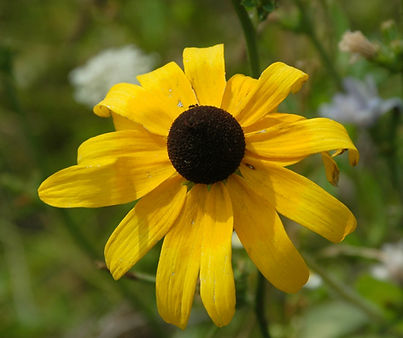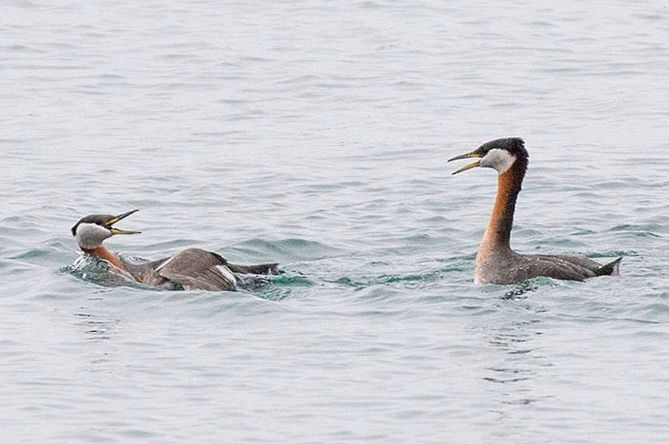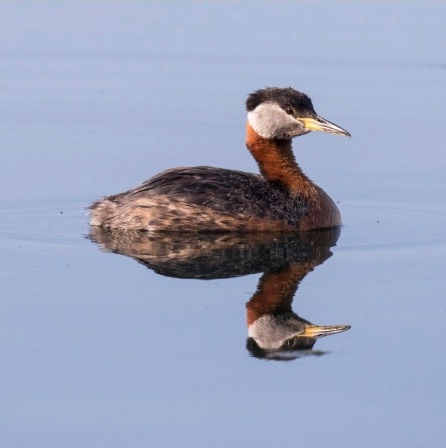C
H
I
M
E
Architecture of Space;
The Teachers' College
The Hospital;
Psychiatric History
The Carrying Place;
Trails of Toronto
The Location Scout;
Movies @ Humber
Trunks and Tweets;
Life in Sam Smith Park
Digital Exhibits
Our History, One Click Away
Trunks and Tweets; Life in Sam Smith Park
It’s not easy being green, but it’s definitely easier in this section of CHIME! Here we celebrate the natural beauty and heritage of the Etobicoke Lakeshore area through an exploration of the trunks and tweets - the flora and fauna - found in our own Colonel Samuel Smith Park!
Here we also celebrate two community groups who have tirelessly advocated for the protection of our lakeshore, and look back at the life of the park’s namesake Colonel Samuel Smith himself!
After reading through these sections, it is our hope that you’ll feel inspired to go outside and explore the Etobicoke Lakeshore neighbourhoods for yourself! Below you’ll find a printable worksheet so you can record and explore the park just like a Park Ranger!
Below you’ll find a worksheet so you can record and explore the park just like a Park Ranger! For a printable version, click the PDF icon.

Trunks
Meet some of our local flora!

Black Eyed Susan
Colonel Samuel Smith Park is a veritable Eden in our own backyard with a large variety of flora and fauna to see, smell, and touch. A common wildflower found throughout the park during the summer months is the Black Eyed Susan or the Redbeckia Hirta.
This golden yellow and black centred flower can grow to be 30-80 cm tall, thriving in sunny open areas. The native Ontario flower can be seen in full bloom in the months between June and October. This flower is both beautiful and medicinal, having been used as an herbal medicine to aid with curing earaches.
The Black Eyed Susan is also known as a hopeful flower: after a natural disaster, it can be counted on to be one of the first to bloom again.


Sugar Maple
The sugar maple is part of the maple tree family. This large tree can grow up to 35m in height and unless injured or infected will live up to 200 years!
It is from the Sugar Maple that Canada finds its national symbol, the maple leaf. This tree is known for its leaves, which change from green to orange and red during the fall. It is this type of maple tree which in the spring is tapped for its sap that is then cooked into maple syrup.
Did you know it takes 40 litres of sap to make just 1 litre of maple syrup?


Virginia Creeper
Colonel Samuel Smith Park is also home to many fruit bearing plants. However, not all of the fruit a plant produces is safe to eat. A good example of this is the Virginia Creeper.
The Virgina Creeper’s berries are beautiful but highly toxic to humans, even their sap can cause skin irritation. The roots and twigs of the plant are not toxic and are used in herbal medicine as a form of cough syrup.
The Virgina Creeper is a vine plant which flowers from June to October. The plant is native to Canada and thrives in partial shade. This plant grows very quickly making it very easy to spot on a walk through the park!
Tweets
Check out a few feathered friends!
As of 2017, Colonel Samuel Smith Park is ranked second in the list of Toronto parks for bird watching by eBird.
There are reported sightings of over 270 species of birds in the park.
Long Tailed Duck
The long-tailed duck is the most common bird in Colonel Samuel Smith Park. This bird lives in lake and pond habitats making the park an ideal home for this species. The long-tailed duck is quite remarkable because it can dive as deep as 60 meters, these ducks spend most of their lives diving underwater foraging for food. This species, while common in the park, is a vulnerable species largely due to its nesting behaviours.
The long-tailed duck lays its eggs in a small nest on the ground by the water’s edge, making the young ducklings vulnerable to predators. As well, due to increased development of shorelines by humans this species are losing valuable nesting grounds.
As these ducks spend a large portion of their lives in the water, entanglement in nets and other manufactured pollutions are a primary cause of its population decline. We need to work to keep our parks and lakes clean to protect this species.
Red-Necked Grebe
In 2012, Colonel Samuel Smith Park was host to Toronto’s first successful Red-Necked Grebe nest. The nest hatched three chicks who can still be spotted in the park. The Red-Necked Grebe traditionally nest in prairie regions, the nests in Colonel Samuel Smith Park are the most eastern nest recorded.
The Red-Necked Grebe is a unique species, unlike other birds it routinely eats its feathers - adult Red-Necked Grebes will even feed their feathers to their young. No scholar has yet to determine the exact reason for this strange behaviour, but many believe the feathers prevent indigestible things such as bones the bird may have eaten from entering and damaging the intestines of the bird.
When this species mates, each bird must perform a series of tasks in order to win the favour of its chosen mate. These tasks include a mating dance on the water called rushing, and presenting their mates with collections of green plants. When the Red-Necked Grebe has found its mate they stay together for the entire year until it’s mating season again. This is strategic because it allows for better care of the chicks because the nest is never left unattended.
Great Blue Heron
Colonel Samuel Smith Park is also home to the largest breed of heron in North America, the Great Blue Heron. These birds are solitary unless they are mating, meaning that spotting one is a great treat!
The bird is identified by its long legs, neck, and bill, with blue-gray feathers. The Great Blue Heron are large birds with an average wingspan of 2 meters. Despite their size, they only weigh 5-6 lbs when full grown, this is because like all birds, Heron bones are hollow to allow for flight.
The Great Blue Heron uses its long sharp bill to hunt fish in shallow waters or marshes, because of its long neck it can move very quickly and catch its prey from great distances.

Meet Canada’s new National Bird!! In the fall of 2016 Canadian Geographic announced that the Gray Jay was to be Canada’s Newest national symbol, just in time for our 150th birthday! Read the article here.
Who was Colonel Sam Smith?
Meet the local community groups!
Colonel Samuel Smith Park is protected by a wonderful group of community members seen in the two citizens groups: the Citizens Concerned About the Future of the Etobicoke Waterfront (CCFEW) and the Friends of Samuel Smith Park (FOSS). Both of these groups advocate for the protection of the park’s flora and fauna while also hosting community activities to which all are welcome!
CCFEW was established by community members as a collective to fight the over-development of the Etobicoke Lakeshore area. As a result of their efforts, parks such as Colonel Samuel Smith Park have been founded in Etobicoke. CCFEW regularly hosts Bird Walks throughout the Lakeshore-area parks as a way of inviting the community to come and enjoy the beautiful waterfront spaces. It is due to these Bird Walks, and the great variety of species of wildlife in the park that Colonel Sam Smith Park has been noted as a leading bird spotting location in Toronto.

Friends of Sam Smith Park (FOSS) is a collection of passionate community members who are dedicated to the protection, enhancement, and preservation of Colonel Samuel Smith Park. Through their works they have advocated for the protection of many vulnerable species who call the park home and were instrumental in the successful nesting and mating of the Red Necked Grebe.
Members are active in reporting animal sightings and photographing the beauty of the park. As well, FOSS members work tirelessly to keep the park clean and safe. Through their website they share updates of the park, host regular meetings, and park clean-ups.
FOSS has a very active member base, with some members curating photography exhibits based on the park, the annual photography show is hosted in the Assembly Hall, and in 2016 in partnership with the Lakeshore Grounds Interpretive Centre a photography exhibit was housed on Humber’s Lakeshore Campus in the Welcome Building.


Curator's Statement:
Trunks and Tweets; Life in Sam Smith Park, is an exploration of the natural wonders of the Etobicoke-Lakeshore area. This exhibition highlights the need to protect our natural landscapes by educating viewers on the vastly different flora and fauna who call Colonel Samuel Smith Park home, as well as shedding light on the community groups who work to protect our lake shore.
It is the goal of this exhibit that viewers will feel inspired to explore their own backyard and feel inspired to themselves advocate for the protection of these natural landscapes.
























